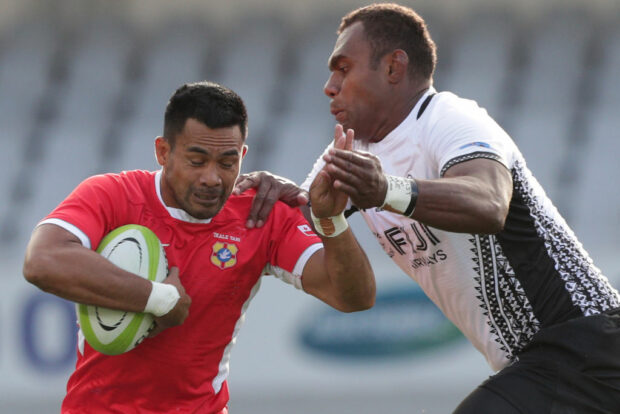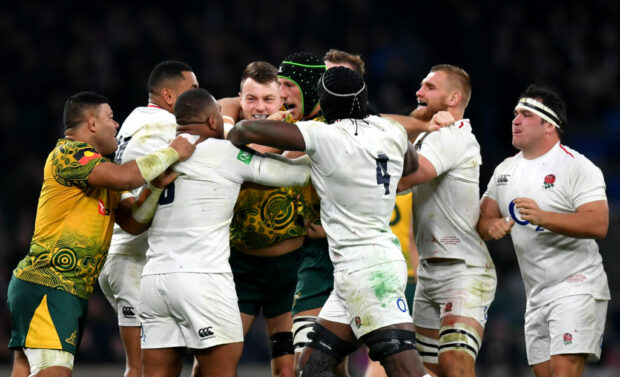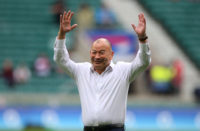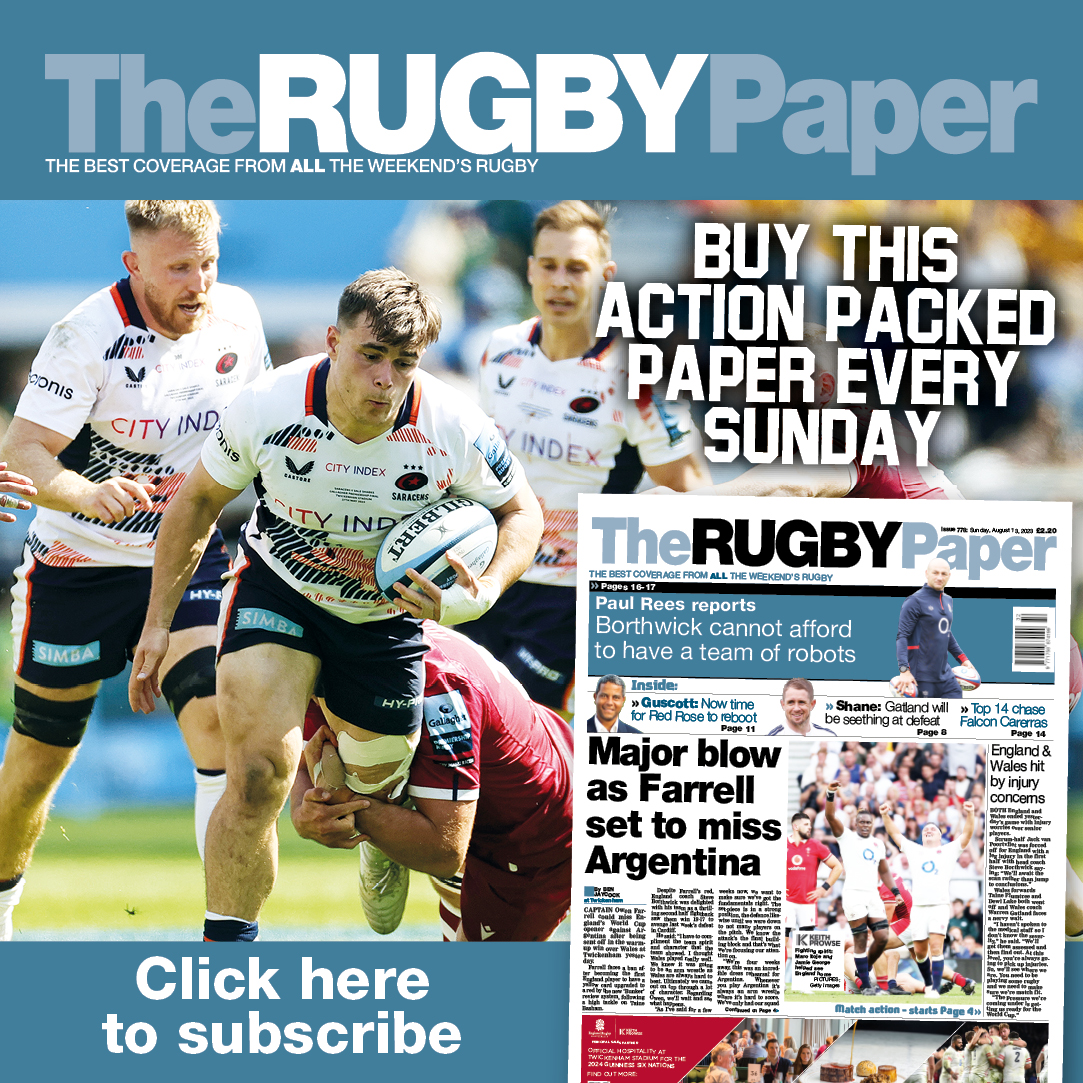THE popular opinion going into the 2019 World Cup is that it will be the “most open” tournament there has been. It has been repeated so often that, less than a week before the opening ceremony on Friday in Tokyo, it has almost become a pundit mantra.
In one sense it is a nonsense, because, of the 20 competing nations, only six have a realistic chance of becoming world champions.
New Zealand could retain global primacy by winning their third World Cup on the bounce (and fourth overall), South Africa could upstage them by winning the Webb Ellis Trophy for a third time, and Australia could do the same.
England are capable of breaking the southern hemisphere monopoly again, and claiming a second world crown 16 years on from their 2003 high point. Six Nations Grand Slam champions Wales are also capable of scaling the highest peak in their rugby history, as are Ireland, the only recent All Black-slayers in the northern hemisphere.
All three of those northern hemisphere nations have opted to employ southern hemisphere coaches to turn them into true contenders, with Kiwis Warren Gatland and Joe Schmidt taking charge of Wales and Ireland, and the Aussie, Eddie Jones, in the England hotseat.
However, it does not alter the reality that the only way it is a wide-open World Cup is in terms of there being less certainty than usual about which of those six teams emerge as the two finalists in Yokohama on November 2.
Set against that, it is a stone cold certainty that of the 14 other competing nations, Russia, Namibia, Uruguay, Tonga, USA and Canada will exit at the end of the Pool stage. There is also a very high probability that they will be joined by Samoa, Italy and Georgia – which means that almost 50 per cent of the participants are also-rans.
That leaves three top tier nations struggling for top end form – France, Scotland and Argentina – battling for places in the quarter-finals, as well as two second-tier teams, Japan, the host nation, and Fiji, as the wild-cards.

A significant part of the success of this World Cup will hinge on whether Japan and Fiji upset the established order, with at least one of them making it through to the last eight.
That is a skyscraper of a tall order, but the Fijians have been there before, coming close to derailing South Africa in the 2007 World Cup quarter-finals, having already beaten Wales in the Pool stage.
My overriding impression watching the Fijians take on South Africa from the Press box at the Stade Velodrome in Marseille on that balmy Mediterranean evening was that the Springboks dodged a bullet.
With 15 minutes left to play the South Africans were hanging on by their fingernails after two brilliant Fijian tries had brought them level at 20-20. All it would have taken to push the eventual world champions over the edge was for Fiji’s mobile lock Kele Rawaqa, who got the ball wide on the left, to have finished a gold-plated scoring chance by diving for the line – as any novice winger would have done.
Instead, tight-five tunnel vision gripped Rawaka, and, in trying to stay on his feet and ride the contact before dotting-down, he was forced into touch-in-goal by JP Pietersen.
It was one of those unforgettable “what if” moments in sport, and as momentum shifted back in favour of the Springboks they showed that superior finishing skills count for more than attacking flair in quarter-finals, as two late tries gave them a 37-20 win.
It was a scoreline that was totally misleading in the sense that it did not reflect just how close South Africa had come to trailing 27-20 – and, with about ten minutes left to play, being the victims of the greatest World Cup upset.
This time to progress to the last eight Fiji will have to pull off a repeat of their 2007 Pool upset against Wales, or beat an Australian side with almost as many Fijians as there are in their own line-up.
It is a daunting task, but the set-piece progress the Fijians have made under the tutelage of Kiwi coach John McKee means it is not an impossible one. Should Wales or the Wallabies fail to fire they are capable of taking advantage – and they only have to look at Fiji’s landmark victory over France in Paris last autumn to register that they have enough power and pace to be a genuine threat.
In 2015 Japan also turned the rugby world on its head, trumping the Fijians in 2007 after springing the greatest upset of the pro era by beating South Africa in their Pool encounter in Brighton.
That match – watched in the middle of the night by a home TV audience of 34 million – sent rugby into the sporting stratosphere in Japan, with their then coach, Eddie Jones, hailed as a national hero.
His Kiwi successor, Jamie Joseph, will be attempting to build on that huge achievement on Japanese soil. His aim will be to secure a bonus point victory over Russia in the opening game before seeking a further win over Samoa to set up the tantalising prospect of qualifying for the quarter-finals.
While dreams of beating Ireland are probably premature, there is little doubt that Joseph will have been targeting the final Pool game against Scotland ever since the draw was announced. Should they topple the Scots to reach the last eight, the 2019 World Cup will be off the charts in terms of its impact in Japan.
It presents the prospect of the whole country being galvanised as the expectations of 126 million souls soar in the hope that the Brave Blossoms make history by not just getting into the quarter-finals, but going even further into uncharted territory.
A second-placed finish behind Ireland would see them into a quarter-final against either New Zealand or South Africa. In both instances, it would almost inevitably be a case of sayonara for Japan – although, having already beaten the Springboks in a World Cup, the hopes of the host nation in the event of such a showdown would at least be based on substance rather than thin air.
Part of that substance is that, with 16 overseas-born players in Japan’s 31 man tournament squad, they are more physically imposing than in the past.
There is little doubt that when it comes to the prospects of the big six contenders that South Africa are the side that set the template for physicality, and having just won the Rugby Championship title after an undefeated run in the truncated tournament, they are a side hitting form at the right time.
It is this that makes their inclusion in Pool B alongside New Zealand such a mouthwatering prospect, especially as these superpowers of the game play each other in the opening round on Saturday.
South Africa’s recent draw with the All Blacks in New Zealand means that the reigning double world champions go into the game with no illusions that their greatest traditional rivals are also the greatest danger to their ambitions of winning an unprecedented third World Cup in succession.
Under the tutelage of Rassie Erasmus the Springboks have returned with a vengeance to the power-play style that has been the unchanging characteristic of their greatest teams. It is based squarely on set-piece strength and a big, fast, abrasive loose-forward presence to get South Africa on the front foot.
Thereafter they employ a kicking fly-half and big, fast midfield backs to continue the physical onslaught – whether aerial or ball-carrying up the middle – and, when the defence is fractured, finish the job with sharp back three strike runners.
It is a tactical strategy that has passed the test of time, and has also worked regularly against New Zealand. However, the All Blacks have developed a successful antidote under Steve Hansen thanks to the dynamism and superb ball skills they have from 1 to 23, and a willingness to attack from anywhere on the field.
The match-ups everywhere on the pitch are intriguing, whether it is Malcolm Marx against Dane Coles at hooker, Duane Vermeulen and Kieran Read at No.8, Handre Pollard and Richie Mo’unga/Beauden Barrett at fly-half, or Cheslin Kolbe and Ben Smith on the wing.
It is an enduringly fascinating tactical battle, and it is one that we could see not only on the first weekend of the tournament, but also on the last weekend, with New Zealand and South Africa contesting the final.
Notwithstanding the significant gains made by Northern Hemisphere sides like Wales, England, and Ireland, the overall results ledger going into the 2019 tournament indicates that the two best teams in the world are New Zealand and South Africa – irrespective of the feckless World Rugby ranking system which puts Ireland in first place.

My hunch is that the quarter-finals will be England v Australia, Wales v France, New Zealand v Scotland and South Africa v Ireland, and the semi-finals New Zealand v England and South Africa v Wales, with a New Zealand v South Africa final.
Thankfully, it is only a hunch, and there would be nothing better than a northern hemisphere side shooting down that knock-out prediction on its way to World Cup glory. Being English, naturally I hope it is England who get to the final and win it for a second time.
Irrespective of the outcome, and looking at it from a global perspective, let’s hope for enough thrills, spills and upsets to disrupt the established pecking order – especially through an unexpected quarter-final breakthrough by Tier 2 nations such as Japan and Fiji – and deliver a great World Cup that engages a new generation of young players as well as fans.
Let the games begin!
NICK CAIN
























